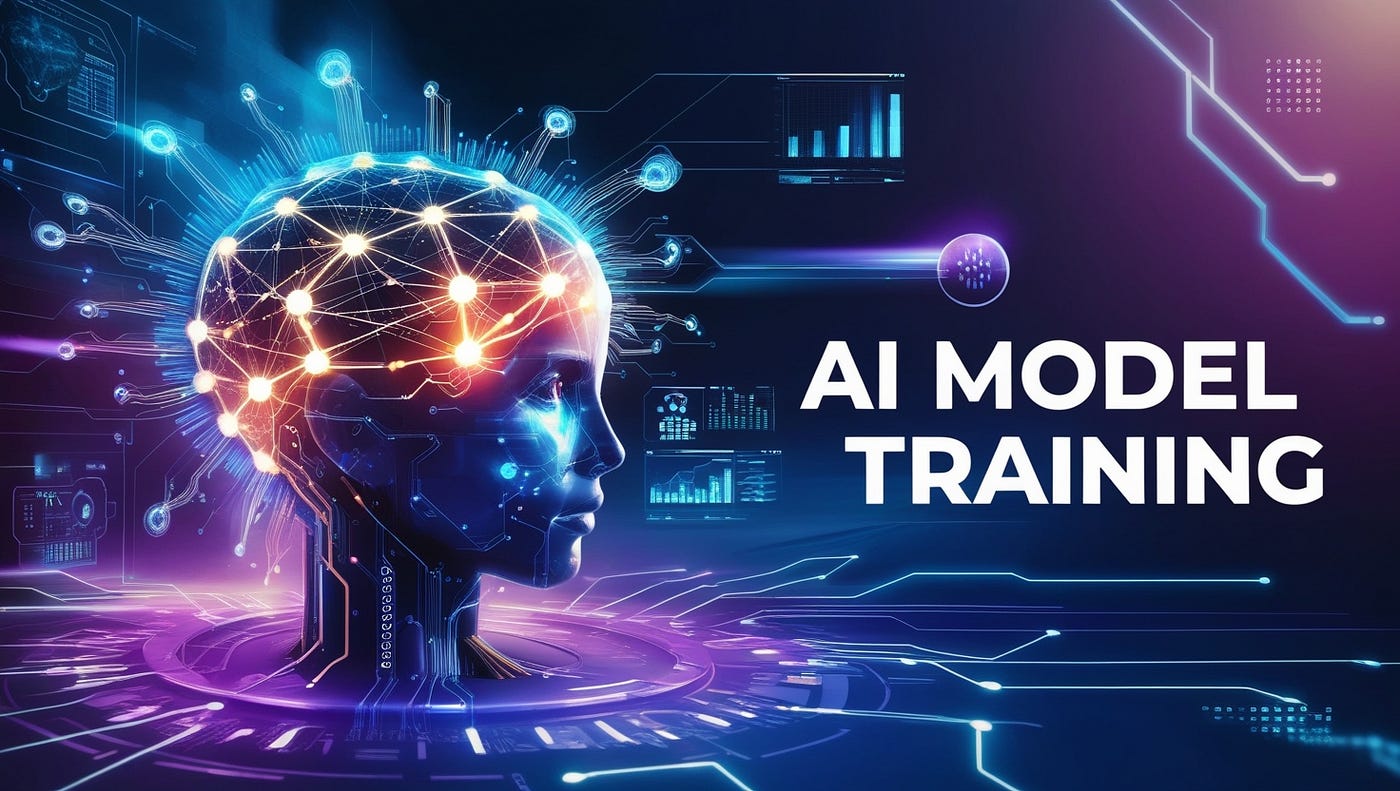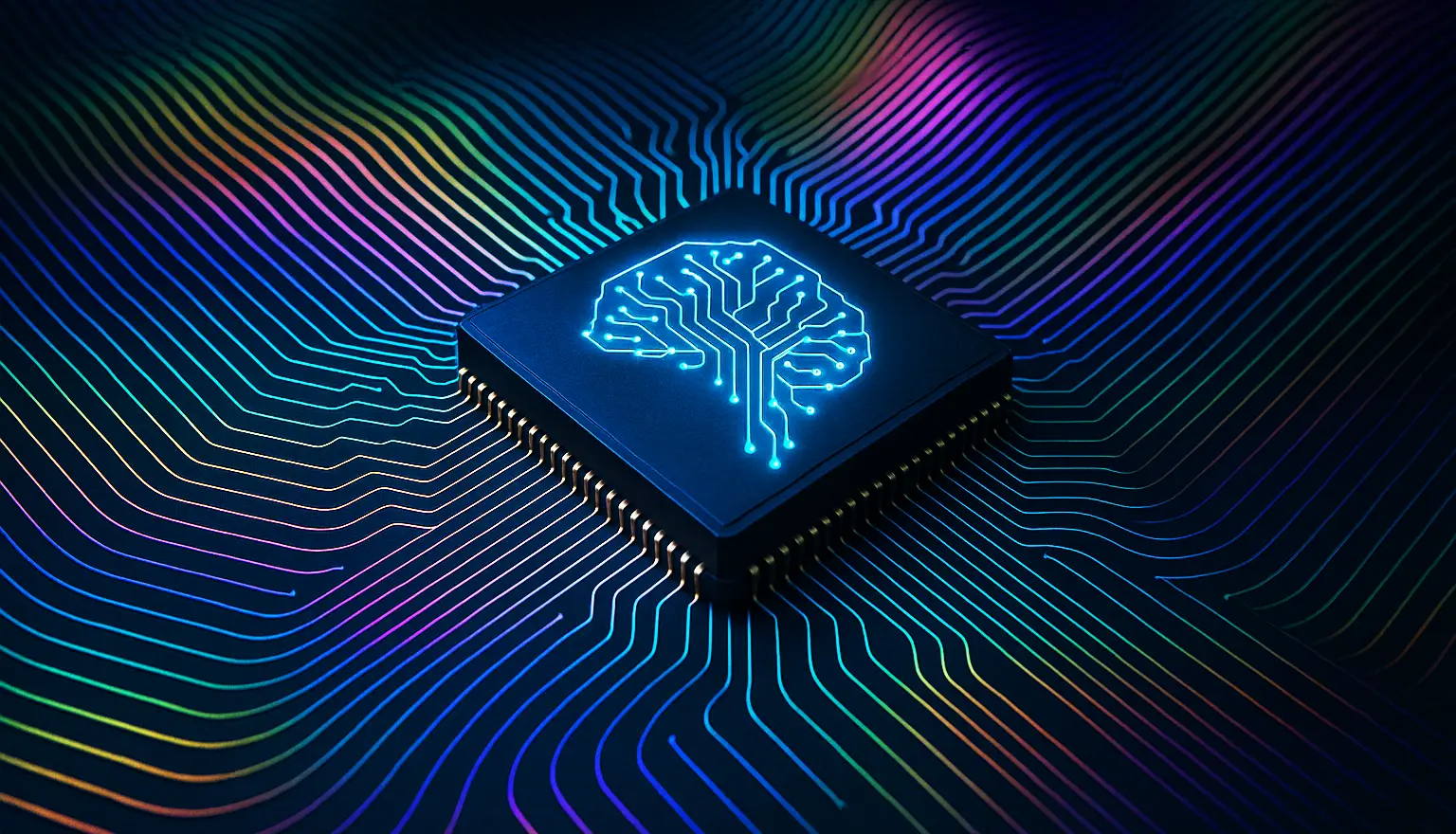Introduction
AI is reshaping the world around us from intelligent chatbots to recommendation engines, image recognition, fraud detection, and autonomous systems. But behind the magic lies a structured process: training AI models.
Whether you’re a curious beginner or a startup looking to leverage artificial intelligence, understanding how to train AI model is your gateway into the world of machine learning.
In this guide by HW Infotech, we’ll walk you through the full process of training an AI model — including neural networks like GPT (Generative Pre-trained Transformers) — in a simple, beginner-friendly way.
What Is AI Model Training?
AI model training is the process of teaching a machine to learn patterns, relationships, and insights from data. The model is fed data, makes predictions, compares its output to actual values, and iteratively adjusts until it performs well.
This is similar to how humans learn from trial and error — only faster and more data-driven.
How Are AI Models Trained?

AI models, whether basic classifiers or advanced GPT models, are trained in three core stages:
- Data Collection and Preprocessing
- Model Selection and Training
- Evaluation and Deployment
Let’s break down these steps in detail.
Step 1: Define the Problem
Before you start training any model, define your objective:
- Are you building a spam filter? (classification)
- Do you want to predict stock prices? (regression)
- Are you building a chatbot like ChatGPT? (language generation)
- Or perhaps a recommendation engine?
Clearly defining the problem helps you choose the right type of AI model and training strategy.
Step 2: Gather and Prepare Data
AI learns from data. The better your data, the smarter your AI model will be.
Types of Data:
- Structured: Excel sheets, databases (e.g., user ratings, prices)
- Unstructured: Text, images, videos, audio (e.g., emails, reviews)
- Labeled Data: Comes with correct answers (used in supervised learning)
- Unlabeled Data: No output labels (used in unsupervised/self-supervised learning)
Data Preparation Tasks:
- Cleaning: Remove errors, duplicates, missing values
- Normalization: Scale values for uniformity
- Tokenization: For text data break sentences into words or subwords
- Labeling: Tag data with the correct output (manually or using tools)
Step 3: Choose the Right Model Type
Your choice of model depends on your task:
| Task | Model Type |
| Image classification | Convolutional Neural Networks (CNNs) |
| Text generation | Transformers (e.g., GPT) |
| Time-series prediction | Recurrent Neural Networks (RNNs), LSTMs |
| Chatbots | Sequence-to-sequence models, GPT |
| Anomaly detection | Autoencoders |
Popular pre-trained models like GPT, BERT, ResNet, YOLO, etc., can be fine-tuned on your data, reducing training cost and time.
Step 4: Select a Framework or Tool
You don’t need to start from scratch. Use AI frameworks to simplify training.
Most Popular AI Training Frameworks:
| Framework | Language | Best For |
| TensorFlow | Python | Enterprise ML |
| PyTorch | Python | Research & GPT training |
| Keras | Python | Beginners |
| Hugging Face Transformers | Python | NLP and GPT-based models |
| Scikit-learn | Python | Classic ML models |
Step 5: Build the Model Architecture
For basic models:
python
CopyEdit
from sklearn.linear_model import LogisticRegression
model = LogisticRegression()
For neural networks:
python
CopyEdit
import tensorflow as tf
model = tf.keras.Sequential([
tf.keras.layers.Dense(64, activation=’relu’),
tf.keras.layers.Dense(1, activation=’sigmoid’)
])
For training your own GPT model, you’ll need:
- A transformer-based architecture
- Tokenizer and language modeling head
- Pre-training or fine-tuning dataset
Or simply use:
python
CopyEdit
from transformers import GPT2LMHeadModel, GPT2Tokenizer
model = GPT2LMHeadModel.from_pretrained(‘gpt2’)
Step 6: Train the AI Model
Now comes the core part — model training.
This involves:
- Forward pass: Model predicts output
- Loss function: Measures error
- Backpropagation: Adjusts weights to reduce error
- Optimizer: Controls learning speed (e.g., Adam, SGD)
python
CopyEdit
model.compile(optimizer=’adam’, loss=’binary_crossentropy’, metrics=[‘accuracy’])
model.fit(X_train, y_train, epochs=10, batch_size=32)
For GPT models, you’ll fine-tune on custom text datasets using Trainer from Hugging Face or similar libraries.
Training is usually done on GPUs or TPUs due to high computational cost.
Step 7: Validate and Evaluate the Model
Use a validation set to check how well the model performs on unseen data.
Metrics to evaluate:
- Accuracy – Correct predictions
- Precision/Recall/F1 – Useful for classification
- Loss – Measures prediction error
- Perplexity – For GPT/language models (lower is better)
If performance is poor:
- Add more data
- Tune hyperparameters (learning rate, batch size)
- Use dropout to reduce overfitting
Step 8: Save and Deploy Your Model
Once trained and validated, you can:
- Save the model using .h5 or .pt formats
- Deploy to cloud (AWS SageMaker, Azure ML, GCP AI Platform)
- Integrate into apps via REST APIs
For chatbot GPT deployment:
- Use services like Streamlit, FastAPI, or LangChain for interaction
- Host on Hugging Face Spaces or Heroku
How to Train Your Own GPT (Language Model)

Training a full GPT model from scratch is resource-intensive. You need:
- Billions of tokens of text
- High-end GPUs or TPUs
- Days to weeks of compute time
- Complex architecture handling (transformers, attention)
So, What’s the Alternative?
Fine-tune a pre-trained GPT model on your domain-specific data.
Steps:
- Collect domain-relevant text (FAQs, documents)
- Tokenize using GPT tokenizer
- Format into prompt-response style
- Fine-tune using Hugging Face Trainer
python
CopyEdit
from transformers import Trainer, TrainingArguments
training_args = TrainingArguments(
output_dir=”./results”,
num_train_epochs=3,
per_device_train_batch_size=4,
warmup_steps=500,
)
trainer = Trainer(
model=model,
args=training_args,
train_dataset=train_data,
eval_dataset=eval_data
)
trainer.train()
Challenges in AI Model Training
- Data Quality: Garbage in, garbage out.
- Compute Resources: Deep learning models need powerful hardware.
- Overfitting: Model memorizes training data, fails on new data.
- Ethical Biases: Biased data leads to biased decisions.
- Explainability: Complex models are often black boxes.
AI Model Training Use Cases Across Industries
| Industry | Use Case |
| Healthcare | Disease prediction, drug discovery |
| Retail | Chatbots, recommendation engines |
| Finance | Fraud detection, portfolio analysis |
| Education | Personalized tutoring, plagiarism detection |
| Real Estate | Property valuation models |
| Marketing | Customer segmentation, sentiment analysis |
Why Choose Findthecoder for AI Model Training?
At Findthecoder, we bring together data scientists, developers, and domain experts to help you:
- Build custom AI models
- Train GPT-based chatbots and assistants
- Integrate AI into your business systems
- Optimize model performance
- Deploy scalable solutions on the cloud
Whether you want to build your own GPT, train a vision model, or automate business workflows we deliver solutions tailored to your needs.
Conclusion:
Learning how to train AI models unlocks endless possibilities — from automating mundane tasks to creating powerful generative apps. With the right data, tools, and guidance, even beginners can start building impactful AI systems.
Training your own GPT or fine-tuning a pre-trained model isn’t as far-fetched as it sounds and with HW Infotech, by your side, you can turn vision into value.

